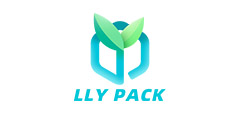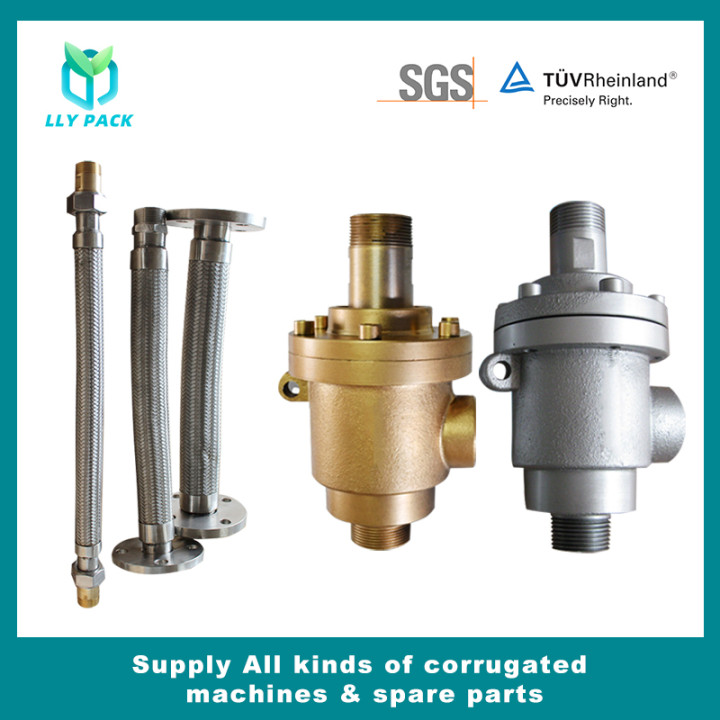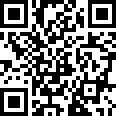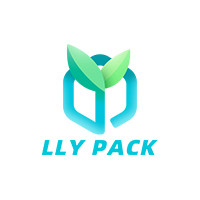From Europe and the United States and other regions, corrugated board is the largest number of packaging products, the total amount of about 80 million square meters. About 90% of corrugated board needs printing. Since flexo printing is the main printing process that can be used, corrugated board is also the largest flexo printing market.
The single-layer corrugated cardboard consists of a paper sheet on both sides of the original corrugated medium. Such a structure results in greater strength than the three-layered paper used, while also maintaining a relatively light mass at this thickness. Ordinary corrugated board types include G, F, E, B, C, and A, in which the G-type corrugated file has the lowest cassette height and the A-type corrugated file has the largest cassette file. Different twist heights combined with different face sheet thicknesses and types, such as bleached/unbleached kraft paper or high tear resistant paperboard, and pasted coated paper and uncoated cardboard, will result in a range of board thicknesses and strengths. Double corrugated cardboard can be used when greater strength is required. The thickness of the corrugated board and the nature and thickness of the face material used have a significant effect on the printability of the board.
Most corrugated paperboards are used for the production of transport packaging. The simple pattern of such packaging is sufficient, mainly for identification and brief introduction. The printed pattern of the shipping package consists of lines of 1 to 3 colors, usually including a company logo and a bar code. About 6% of corrugated paperboard is used in the display of point-of-sale and retail packaging. This area has high requirements for printing quality, and usually includes four-color images of cable.
After printing
Printing directly on corrugated board is called post-printing, and most printed corrugated board packages are produced this way, using flexographic printing and water-based inks. Flexo printing is economically efficient because it is ideally suited for different print jobs and can print 1 to 8 colors on any thickness of paperboard (the number of colors depends on the press). When printing directly on corrugated board, because too much printing pressure will crushed the corrugated board and impair its strength, it is necessary to reach the following balance: use enough pressure to effectively transfer the ink, and make the pinhole (the ink cannot be appropriate Wetting of the surface of the substrate with bead-like holes revealing the occurrence of bottom defects; this failure is minimized; at the same time, the pressure is not so high as to damage the cardboard structure.
A certain degree of adhesion is generally observed on corrugated cardboard after flexo printing, especially in the area of the cable, which is caused by the fact that the dot expansion has become more serious where the top of the corrugated paper tip touches the tissue paper. the result of. In the use of lightweight paper, the phenomenon of sticking is the most obvious, and the paper is “immersed” between the tips of the corrugated paper, which exacerbates this phenomenon.
For corrugated and printed post-print corrugated board, the recommended amount of face paper should be at least 180g/m2. The corrugated board should be fed in the same direction as the corrugated paper, so as to minimize the phenomenon of “cooking board”.
Corrugated cardboard for transport packaging requires only 1 or 2 colors and simple drawings. A large number of cartons processing plants are buying bulk corrugated cardboard, which are specially printed to produce transport packages of the type. The printing presses used include monochrome, two-color or three-color corrugated board printers, which usually do not have any form of drying aid and are used in conjunction with a folder/gluer. This type of device has limited printability and is only suitable for printing jobs with simple lines and blockwork, as well as a rather rough, light-colored flat screen.
For the corrugated paperboard used for packaging packaging, end-users are increasingly demanding the ability to print higher-quality drawings. The industry is demanding this: Purchase new equipment that uses the latest technology, can print more colors, and have enhanced production performance, such as BOBST. The latest single-strand corrugated board printers such as the Masterflex series. This machine can print up to 8 colors and can be online or offline die-cut. This kind of flexo printing equipment is suitable for printing various types of cardboard, different thicknesses of printing plates can be used, and has the ability to pull skew. They are capable of high-quality flexographic printing at speeds of up to 10,000 sheets/hour. The anilox roll can be replaced in minutes without operator intervention; at the same time, the chambered doctor blade makes automatic cleaning easier and reduces downtime; independent servo motors allow correction of the print length and ensure accurate overprinting, but also When the equipment is in operation, the unused units are set; with the ability to use thin plates, fine anilox rollers can be used to print high-quality four-color screened nets with 85 to 120 lines/inch screens. The print quality can be competed with the use of facial paper preprinting equipment for printing.
Other printing processes
Corrugated cardboard can also be screen printed, offset and digitally printed in the form of a single sheet. However, these current printing processes only occupy a relatively small market share.
Screen printing produces high-quality, high-gloss, color-strength printed products that are commonly used for sales and display packaging. Screen printing is slower than flexo printing, and the unit cost is higher. It is only suitable for relatively small number of jobs.
Offset printing is currently only used for direct printing of micro-corrugated cardboard, and offset printing machines suitable for printing on cardboard with a greater thickness are being developed. The materials produced by direct offset printing can be die-cut, avoiding the extra cost due to offset printing, making the offset printing process ideally suited to the high quality requirements of short-run, small-size, light-weight carton and timely delivery.
Sun Chemicals, working alongside Inca Digital, has developed an inkjet printer that uses UV ink and has a fixed array of print heads for the printing of single-wall corrugated cardboard. The technology is targeted at the short-cut, high-quality corrugated cardboard market. It was introduced to the market as a complementary technology, and its linear speed has now reached 100 meters per minute, which is equivalent to 60,000 square meters per hour. In cooperation with first-rate flexographic equipment suppliers, the mechanical requirements for paperboard feeding and transportation have been met, and four-color printing can be performed with printing accuracy of 300 dpi×300 dpi. The maximum printable paper size is 80 inches×48 inches ( Length × width, 120cm × 170cm). Inkjet printing is digital printing, so there is no cost of printing plates. Sunchem believes this technology is cost-effective for jobs with a print area no larger than 3,000 square meters (40,000 square feet).
Industry sources believe that if the average number of prints for some sheetfed presses is less than 5,000, if this technology is powerful enough, it may have an important market share in a relatively short period of time.
Preprint
The so-called preprinting means that the corrugated cardboard sheet is printed by a flexo printing machine in the form of a reel, water-based ink is used, a satellite-type printing machine, and then the upper corrugated board production line is made of corrugated cardboard. The most important reason is that the preprinted method can obtain higher and more stable quality and better overlay accuracy. Pre-printing also has advantages such as the elimination of the phenomenon of "squeeze board" and the like, and the advantages of having a printed metallic ink and printing a seamless design pattern. Preprinting is an ideal method for long-run printing and is suitable for all corrugated base papers and double corrugated cardboard.
Some of the latest press technologies have been adopted on the Flexpress 96S eight-color satellite flexographic press designed for the tissue pre-printing at Fischer & Krecke in Germany. The company claims that the Flexpress 96S is the only satellite flexographic press that has a transverse load-bearing system using servo drive and sleeve technology. The servo drive achieves infinitely variable speeds with repeat lengths between 750mm and 2000mm. An additional expansion module increases the repeat length to 3500mm. The maximum print width of this flexo press is 2750mm and the speed reaches 400m/min. The speed of 600 meters/minute can be selected. Other options include an automatic cleaning system that allows for faster cleaning, an access system that allows unused units to be ready for operation while the press is running, and an extra color stacker unit.
Offset printing can also be used for preprinting of corrugated cardboard. If this process is chosen, the paper is pre-printed and then printed into a corrugated paperboard through a separate process, known as offset printing, due to the costs involved.
Offset sticker is a prepress solution with high quality and relatively high yield. The number of screens for offset printing preprinted is 175 lines per inch. For the printing of small-area four-color screens, it can achieve higher printing quality than direct printing on corrugated board or flexo preprinting. Preprinted and flexo-printed facestocks can be applied to the surface of any grade or thickness of corrugated material.
Each has its own strengths
When it comes to determining the best printing method for a job, the number of prints, carton size, and print quality requirements are the main determinants. Flexo printing can meet the most demanding requirements and achieve the greatest improvement in print quality. As the performance of post-flexo printing in recent years has become so compelling that the demand for flexo preprinting has also been affected by the decrease in the number of copies, this market development trend has been affected. However, the printing quality of corrugated board is crucial to the success of post-printing, especially the high-quality four-color job.
Pre-printing is a more economical option than post-printing, and still has advantages in dealing with high-quality long-run jobs or special requirements such as printing seamless designs. When it is necessary to use a very high screen number to reproduce a large amount of image details, offset printing stickers are the best choice for their ability to print up to 175 lines per inch. When printing directly on micro-corrugated cardboard with offset printing, high printing quality is exhibited; at the same time, the low cost of pre-press production makes it very suitable for medium and long-run printing of micro-corrugated cardboard. Since digital printing does not have the cost of printing plates, and it has reached a printing speed of 100 meters/minute, it is extremely suitable for occupying the short-range high-end business market. With the ever-decreasing number of printed copies and the continuous development of inkjet technology, digital printing may occupy an important share of the corrugated board packaging printing market in the next few years.
EnglishEspañolPortuguêsDeutschहिंदी日本語ខ្មែរNederlandsالعربية한국어मराठीMalagasyItalianoPolskiSvenskaελληνικάPусскийภาษาไทยTürkShqipMagyarViệtSamoaМонголMaltiIndonesia FrançaisMelayuҚазақшаYorùbáবাঙালিעִברִיתGàidhligSomaliEesti keelKreyòl Ayisyennorskčeštinaفارسیతెలుగుမြန်မာBosanskiMaoriქართულიRomânăбеларускіУкраїнськаతమిళGaeilgeSuomalainenپښتوລາວհայերենSlovenščinaFilipinoO'zbekÍslenskaייִדישLatviešuGalegoFryskनेपालीKurdîCatalàбългарскиHawaiianHrvatskiਪੰਜਾਬੀWong JawaKiswahililëtzebuergeschisiXhosaEuskalSundaZuluગુજરાતીТоҷикӣ
- Casa
- Chi siamo
-
Elenco prodotti
- Linea ondulata
- Macchina ondulata >
-
Ricambi a macchina ondulata >
- Giunto rotante
- Pettine per il marcatore di scivolone
- Pastiglie dei freni
- Pompa diaframma per colla
- Stripper di carta scarica
- Chuck di espansione
- Tubo flessibile in metallo
- Mola
- Nastro per splicer
- Rullo ondulato
- Lama di taglio
- Cintura di trazione del ponte sopraelevato
- Ruota del sole
- Cintura del trasportatore
- Lama da taglio NC
- Trappola a vapore
- Cilindri pneumatici
- Freno pneumatico
- Air Bellow Spring
- Pompa a vuoto ad anello d'acqua
- Lubrificante a macchina ondulata
- Distanziatore di gomma
- Distanziatore placcato in titanio
- Flexo Stampter Slotter
- Macchina della stampante Flexo >
-
Parti di ricambio della stampante >
- piastra di rame
- PIASTRA DI STAMPARE
- Pompa Aro.
- Pennello in acciaio e ottone
- Filtro in inchiostro
- Doctor Blades.
- Copertura dell'antico
- Lama di slotting.
- Nastro in fibra
- Cornice sospesa
- PET PRESSIONE PET con film
- Cuscino di stampa r e bak
- Ruota di alimentazione
- Un modo portante
- Die board rotary.
- Pompa a diaframma singola
- Blocco finale con condotto a inchiostro
- Diaframma in gomma
- Valvola di Duckbill
- Freno della frizione magnetica
- Striscia di scanalatura sospesa
- Macchina da imballaggio >
- Macchina per cartone >
- Parti della macchina di cartone. >
- Cinture a doppia facciatura.
- Cucitura del sistema di incollaggio >
- Lama di taglio di cartone >
- Lama in acciaio di tungsteno >
- Mola
- Stripper di rifiuti
- Lama della macchina per imballaggio >
- Apparecchiatura pre-pressione >
-
Lama di taglio industriale >
- Lama da sega circolare di taglio delle piastrelle
- Lama della sega da taglio in metallo
- Lama segale da taglio in legno
- Lama segale da taglio del cibo
- Lama da taglio in fibra
- Blade di chipper
- Stampo pieghevole
- Lama per la macchina da taglio vegetale
- Lama sottile in acciaio
- Lama da stampo Tsukatani
- Lama da stampante
- Blade della macchina maschera
- Slitter Rewinder Blade
- Lama tmr
- Lama circolare del tabacco
- Roll Shear Blade
- Coltello dentellato per imballaggio
- Blade a fascia da taglio di carta
- Lame del dottore
- Lama rotonda
- Tre buche lama
- Lama ceramica
- Bastello a banda Blade per tessuto
- Bastello a banda Blade per spugna schiuma
- Bastello a banda per la scissione della macchina
- Lama del coltello a banda per carta
- Porta della lama
- Lama di taglio industriale
- Taglierina
- Smerigliatrice angolare
- Blade Shredder
- V Grooving Blade
- Forbici elettriche
- CNC Machine Blade & Tools
- Lama di trasformazione alimentare
- Notizia
- video
- Contatti
- Invia domanda











